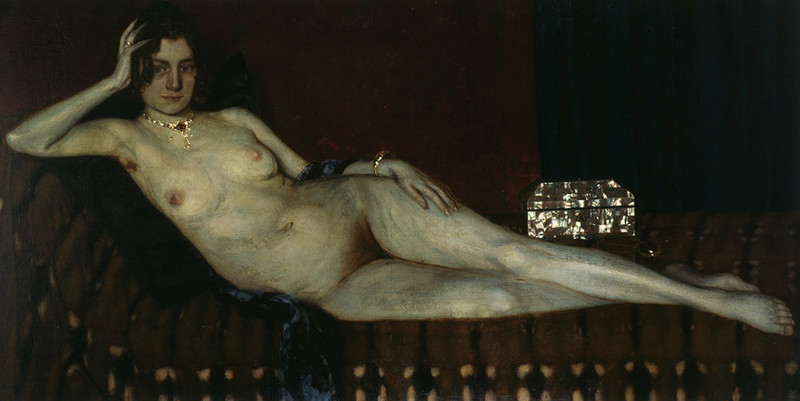Beauty and Mystery
24 Mar - 07 Jul 2013
BEAUTY AND MYSTERY
German Symbolism
24 March - 7 July 2013
In an extensive exhibition of over 150 works of art from more than forty museums and collections, the Kunsthalle Bielefeld will present a survey of German Symbolism. Even though there has been less research into it, and it is less present than its almost simultaneous contemporary, Impressionism, the mythological, magical visual worlds of Symbolism retain to this day a mysterious, fathomless aura. Beginning in the 1870s Symbolism emerged across Europe as a phenomenon oscillating between the longing for nature and the belief in progress, between the traditional and the modern. Starting with the pioneers of this movement, Arnold Böcklin, Hans von Marées, and Anselm Feuerbach, the exhibition will feature the many themes of German Symbolism, which is rooted in Romanticism and whose images anticipate a paradisiac, timeless unity of man and nature in expressionist approaches. It reacted with a new kind of spirituality to the materialism of the late nineteenth century, to the new, sometimes disturbing discoveries in science and psychoanalysis, and to the rapid development of industry and technology. Among the great themes examined by artists such as Franz von Stuck, Max Klinger, Ludwig von Hofmann, and Lovis Corinth are myths, sexuality, the role of women, and the relationship between genders. The art combines traditional elements with modern attitudes and makes use of an academic, realistic style of painting, as well as emphatic color. Thus, in a historicizing, mythological guise, Symbolic art put the bourgeois conventions of Wilhelmine society up for debate, heralding social change in the late period of the German empire. This exhibition provides compelling insight into a fascinating epoch of art history that is in the process of being rediscovered.
German Symbolism
24 March - 7 July 2013
In an extensive exhibition of over 150 works of art from more than forty museums and collections, the Kunsthalle Bielefeld will present a survey of German Symbolism. Even though there has been less research into it, and it is less present than its almost simultaneous contemporary, Impressionism, the mythological, magical visual worlds of Symbolism retain to this day a mysterious, fathomless aura. Beginning in the 1870s Symbolism emerged across Europe as a phenomenon oscillating between the longing for nature and the belief in progress, between the traditional and the modern. Starting with the pioneers of this movement, Arnold Böcklin, Hans von Marées, and Anselm Feuerbach, the exhibition will feature the many themes of German Symbolism, which is rooted in Romanticism and whose images anticipate a paradisiac, timeless unity of man and nature in expressionist approaches. It reacted with a new kind of spirituality to the materialism of the late nineteenth century, to the new, sometimes disturbing discoveries in science and psychoanalysis, and to the rapid development of industry and technology. Among the great themes examined by artists such as Franz von Stuck, Max Klinger, Ludwig von Hofmann, and Lovis Corinth are myths, sexuality, the role of women, and the relationship between genders. The art combines traditional elements with modern attitudes and makes use of an academic, realistic style of painting, as well as emphatic color. Thus, in a historicizing, mythological guise, Symbolic art put the bourgeois conventions of Wilhelmine society up for debate, heralding social change in the late period of the German empire. This exhibition provides compelling insight into a fascinating epoch of art history that is in the process of being rediscovered.

